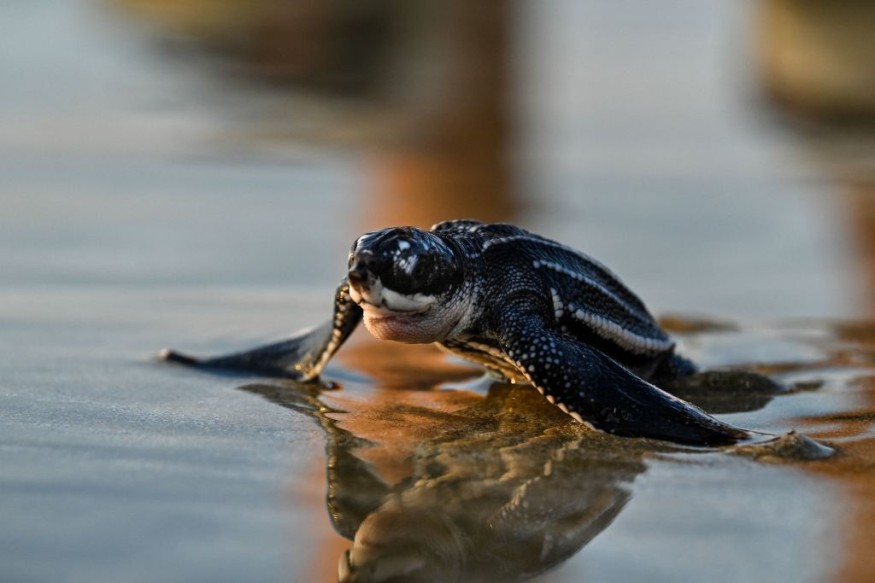A dead leatherback sea turtle washed up along an Australian beach over the weekend. Although related incidents have been reported in the past, wildlife officials are clueless as to the main cause of the animal's death. Previous cases are linked to turtle hunting and natural factors like predation. The said turtle is critically endangered species that faces a declining population worldwide.
Over the last four decades, the reported global population of female leatherback turtles has dwindled from over 100,000 down to only several thousands. In some instances, a number of baby turtles struggle to reach the ocean from the shore and survive until adulthood. This has been the scenario found along the Atlantic, Pacific, and Indian Oceans.
Dead Giant Sea Turtle

The dead leatherback sea turtle was found on Whale Beach in the north of Sydney, Australia, on March 5. The Australian Registry of Wildlife Health at Taronga Zoo took in the dead marine animal to conduct a necropsy and determine the cause of death.
However, the state of the body decomposition may cause the post mortem several weeks to complete, a spokesperson at the National Parks and Wildlife Service stated, as reported by Australia's ABC News, as cited by Newsweek.
Leatherback Sea Turtle Species
The leatherback sea turtle (Dermochelys coriacea), sometimes called the lute turtle or leathery turtle, holds the title of the largest living turtles in the world today. However, their population is already at risk, as reported by scientists and conservationists alike.
Leatherback turtles consume large populations of jellyfish to keep their numbers in check. Just like other marine turtles, D. coriacea is a living representation of a reptile group that has lived on Earth and traveled the seas in the last 100 million years, according to the World Wildlife Fund (WWF).
While sea turtles rely on beaches for nesting, the dawn of human modernization; which includes uncontrolled coastal development, beach vehicular traffic, and other human activities have directly destroyed or disturbed turtle nests on beaches worldwide, the WWF reported.
Leatherback Turtle Population Status
As mentioned earlier, the leatherback turtle is designated as endangered under the Endangered Species Act, a legislation which aims to protect endangered, threatened, or vulnerable species.
In Malaysia, leatherback turtle nesting has almost disappeared, decreasing from 10,000 nest in 1953 to only one or two nest annually since 2003, according to the National Oceanic and Atmospheric Administration (NOAA).
In the Eastern Pacific, the primary nesting habitats of the leatherback turtle population are in Mexico and Costa Rica, with isolated nesting sites in Panama and Nicaragua. The last three generations saw the decline of nesting by more than 90%.
In the Western Pacific, the largest remaining leatherback population occurs in Papua Barat, Indonesia and has also plummeted by 80%, the NOAA adds.
In the Northwest Atlantic, nesting was increasing but a significant decline was reported in recent years in several locations, including along the Atlantic coast of Florida.
Related Article: Dead Giant Leatherback Turtle May Have Been Killed by Pollution
© 2025 NatureWorldNews.com All rights reserved. Do not reproduce without permission.





